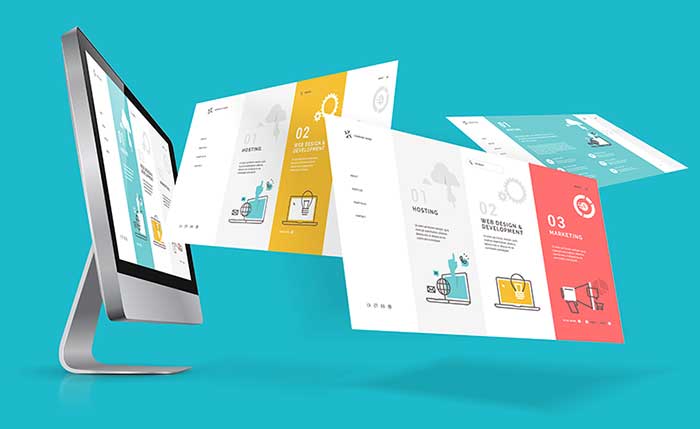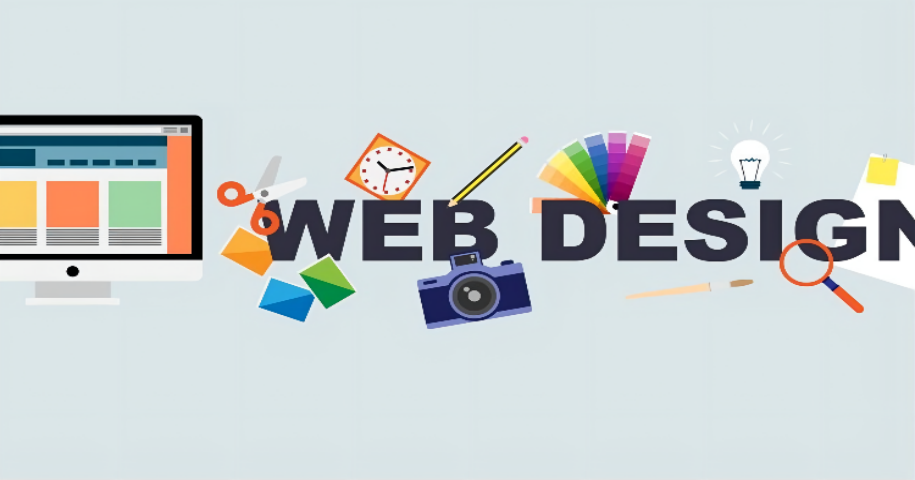Creating a Mobile-Optimized Website with Expert Web Design Techniques
Creating a Mobile-Optimized Website with Expert Web Design Techniques
Blog Article
Comprehending Individual Experience: Trick Concepts for Effective Internet Layout
In the realm of website design, understanding user experience (UX) is critical to creating systems that not only bring in but additionally maintain users. Trick concepts such as instinctive navigating and efficient feedback systems play vital roles in cultivating customer complete satisfaction. Additionally, factors to consider for accessibility make certain that all users can involve with the content perfectly. However, the subtleties of aesthetic style and the relevance of iterative testing frequently continue to be forgotten. As we explore these fundamental components, it comes to be obvious that mastering UX is not merely an alternative however a requirement for success. What are the ramifications of ignoring these concepts?
Importance of User Experience

In the realm of internet style, one can not undervalue the importance of user experience (UX) as a crucial component that directly affects the success of a website. A positive UX not only enhances user fulfillment but also fosters commitment, motivating repeat sees and interactions. When individuals come across a engaging and instinctive user interface, they are more probable to explore the content, transform right into customers, or share their experiences with others. This natural promotion can dramatically magnify a brand's reach and presence.
It includes the total capability of a web site, guaranteeing that navigating is smooth and information is easily obtainable. Internet sites that prioritize UX are commonly viewed as even more legitimate and credible, which can have a profound impact on conversion prices.
Eventually, buying customer experience is not simply a design option; it is a calculated decision that can set apart a brand name in a jampacked marketplace. By focusing on UX, services can create purposeful interactions that resonate with users, paving the way for continual success in the electronic landscape.
Functionality Principles
Reliable website design depends upon the application of essential usability principles that guarantee an internet site is both functional and user-friendly. Central to these principles is the concept of intuitiveness, where users can navigate the website effortlessly without considerable direction. Clear navigating structures, consisting of consistent formats and well-labeled menus, improve this user-friendly experience, permitting users to situate info promptly.

Consistency is just as crucial; preserving uniformity in style aspects, terminology, and treatments throughout the website helps to reduce confusion. Individuals should not need to relearn exactly how to connect with different sections of the site.
Additionally, mistake avoidance and recuperation are essential for usability. Internet sites need to be developed to minimize the possibility of customer errors, and when blunders occur, positive and clear mistake messages must assist individuals in the direction of resolution.
Ease Of Access Factors To Consider
Making certain accessibility in website design is extremely important for producing inclusive digital experiences that provide to all customers, including those with specials needs. Accessibility factors to consider entail designing internet sites that suit varied requirements, enabling customers with visual, auditory, cognitive, or motor impairments to browse and communicate efficiently.
To achieve this, web developers should stick to established standards, such as the Internet Web Content Ease Of Access Guidelines (WCAG) These guidelines give a framework for making content perceivable, operable, understandable, and robust. Key methods consist of making certain adequate color contrast, supplying try this web-site message options for non-text content, and making sure keyboard navigability.
Furthermore, semantic HTML needs to be utilized to improve display viewers compatibility, enabling customers with visual problems to understand the structure and definition of material without effort. web design. Offering clear, concise guidelines and making use of straightforward language can further boost use for individuals with cognitive impairments
Routine ease of access screening, entailing actual individuals with specials needs, is vital to determine barriers and enhance the customer experience. By prioritizing ease of access, web developers not only adhere to lawful criteria yet also foster a more equitable digital landscape, ultimately benefiting everybody via improved use and engagement.
Aesthetic Design Aspects
A myriad of visual style elements plays a vital duty in shaping user perceptions and experiences on a website. These components consist of color design, typography, whitespace, design, and imagery, each adding to the general visual allure and effectiveness of a site.

Color pattern stimulate feelings and can affect customer actions; for example, warm shades may develop a sense of seriousness, while trendy shades frequently promote calmness. Typography, on the other hand, affects readability and can establish a brand's personality - web design. The selection of font design and dimension need to align with the website's purposes and target market
Imagery, including icons and photos, boosts storytelling and can substantially affect customer engagement. High-quality visuals create a sense of expertise, while poor-quality pictures may diminish the individual experience.
Format and whitespace are just as important, as they lead individuals via the material. A well-structured design aids individuals find info swiftly, while adequate whitespace stops clutter, helping with an extra enjoyable browsing experience.

Checking and Model
User screening and version are fundamental components of an effective web layout procedure. Individual screening includes observing how actual customers communicate with a website, recognizing usability issues, and understanding individual behavior.
Version, on the various other hand, is the process of fine-tuning the design based upon the understandings acquired from individual screening. By making step-by-step changes and re-evaluating the style, groups can enhance performance, boost visual appeals, and enhance customer involvement. This intermittent method promotes a society of continuous improvement, allowing designers to adapt to individual requirements and you could try this out emerging trends effectively.
Additionally, Look At This incorporating both customer screening and iteration into the design process leads to more informed decision-making and ultimately leads to a more user-centered product. By accepting these concepts, web developers can create extra intuitive, engaging, and efficient experiences that reverberate with their target audience, inevitably driving greater individual satisfaction and retention.
Conclusion
In final thought, user experience is an essential component of reliable web style, incorporating functionality, ease of access, and aesthetic considerations. Continual screening and iteration offer as vital processes for determining and attending to user pain points, making sure that web designs remain adaptable to developing demands.
In the world of internet style, understanding customer experience (UX) is extremely important to developing platforms that not just draw in however likewise retain individuals.In the world of web layout, one can not underestimate the importance of customer experience (UX) as a pivotal aspect that directly affects the success of a site. Customer testing involves observing just how real customers communicate with a web site, recognizing functionality concerns, and comprehending customer actions.In final thought, customer experience is an essential component of efficient web style, incorporating use, accessibility, and visual factors to consider. Continual screening and iteration serve as crucial processes for addressing and identifying customer pain points, ensuring that internet layouts remain adaptable to advancing needs.
Report this page